UP TO THE MINUTE
Sustainability in Coil Coatings - PODCAST TRANSCRIPT
May 10, 2024 at 12:00 p.m.Editor's note: The following is the transcript of a live interview with Amanda Paterline and Tessa Slagterfrom AkzoNobel. You can read the interview below, listen to the podcast or watch the video!
Intro: Welcome to CoatingsCast, the ultimate podcast dedicated to the science, art and innovation of roof coatings. It's time to roll up our sleeves, put on our lab coats and dive headfirst into the world of liquid protection that keeps your roofs in prime condition. The future of roofing is here and it's liquid, so don't miss out. This is CoatingsCast, where every drop counts in the world of roof protection.
Heidi J. Ellsworth: Hello, and welcome to another CoatingsCast from CoatingsCoffeeShop. My name is Heidi Ellsworth and you know what? We've got a really special CoatingsCast today. We are with the experts from AkzoNobel and we're going to talk about sustainability. I am super excited to introduce Amanda Paterline and Tessa Slagter to the show. Hello, ladies.
Amanda Paterline: Hi. Thanks, Heidi.
Tessa Slagter: [inaudible 00:00:51].
Heidi J. Ellsworth: Hi, thanks, Heidi. It is so fun to have you both on here. You know what? Before we dive into sustainability, let's do some introductions: So let's start out with Tessa. Can you introduce yourself, tell us what you do with AkzoNobel? That would be great.
Tessa Slagter: Yes, of course. Yeah, thanks a lot for having us today.
Heidi J. Ellsworth: Yes.
Tessa Slagter: My name is Tess Slagter. I'm based out of Amsterdam, the Netherlands, where our AkzoNobel headquarters is. I hold a master's degree in innovation management with a specialization on sustainability. And I started my career first in the chemical industry, focusing on plastics and moved towards recyclable plastic and now work more than five years at AkzoNobel. I'm leading the sustainable innovation function.
Heidi J. Ellsworth: And Tessa, it's so nice to meet you. Very impressive. And Amanda, can you introduce yourself?
Amanda Paterline: Yeah, thanks, Heidi. I'm Amanda Paterline. I have a background in chemistry. I spent the first several years of my career as a chemist in the automotive coatings field, before moving into sales. Took a brief departure and went into a software as a service product roles, which was a great experience, but found that I'm really passionate about performance coatings.
It excites me how aesthetics and protective properties can be used to delight our customers. So about eight months ago, I came back into the coatings world, joined AkzoNobel and have just really enjoyed seeing how our company's cultivating a resilient future with our innovations and commitment towards progress as it pertains to sustainability. So I look forward to sharing today with you guys how we're doing that while maintaining key performance and aesthetic properties.
Heidi J. Ellsworth: I love it. Again, so impressive. This is a great conversation. Amanda, can you tell us just a little bit about AkzoNobel, just the company overall and what you're doing within the construction?
Amanda Paterline: Yeah, yeah. So AkzoNobel is a global company. We have a footprint here in the US. Like Tessa mentioned, we have our headquarters in the Netherlands and then in the Americas region, we have research and development sites and manufacturing sites in Columbus, Ohio, Strongsville, Ohio, where I'm based, Garcia, Mexico and then down in South America.
So a little bit about what we're doing for sustainability, which I think Tessa can probably dive a bit deeper into, but we were one of the first coatings companies to set science-based targets for our ambitions. I don't know, Tessa, if you want to share a little bit more about what that means to Akzo and what that means for our customers?
Tessa Slagter: Yeah, sure, yeah. So at AkzoNobel now we have a key three key focus areas being climate change, circularity and also wellbeing. And for climate change, we were indeed the first fencing coatings company to set science-based targets that have been approved by the Science Based Targets Initiative. That means that we're looking for our own operations to reduce our carbon footprint by 50% in 2030, using 2018 as our baseline, but not just for our own operations, we've also set that target for our entire value chain.
That means that we're looking going upstream, so what can we do with our raw materials, but also downstream. So for example, how are our coatings being processed at our customers? What [inaudible 00:04:04] carbon is in the products that we're supplying to our customers? And also, in terms of POC, how can we reduce the POC in our product? We're really doing upstream and downstream in product. We had those very ambitious targets in line with the Paris Agreement, which actually, for me, this is one of the most exciting topics that we're working on at AkzoNobel, together with our customers and suppliers.
Heidi J. Ellsworth: I love it, I love it. So Tessa, let's just talk about overall, I would love your opinion on overall sustainability, kind of what you see happening overall and especially in metal construction.
Tessa Slagter: I think sustainability has been taking a huge step forward, and when I started my career, it was really a niche environment and now you see that all of the students at university are learning about the United Nations Sustainable Development Goals and they're all being raised with that. And we see that at AkzoNobel also, all the people want to start learning more about it. So actually, we've launched some internal training about carbon footprint for example and only in two weeks, we already have 200 of our marketeers being trained on the topic of sustainability because they want to learn more about. So I think that the one thing that you see is that the appetite is growing. I think also there's a lot of collaboration ongoing also in the metal construction industry. So we get with our customers and with supplies. Everybody knows that you need to work together, because you cannot do this alone and it's a great topic to also become more partners with your customers.
Heidi J. Ellsworth: You know, I love hearing that too, because when you're talking about the next generation, I remember those were the things that we learned, recycling, all that and so we now are taking this to a whole new level of sustainability. Amanda, what are you seeing? Same thing kind of in the US with this movement?
Amanda Paterline: Yeah, so kind of what you were starting to talk about a bit, just from a social aspect, we're seeing that consumer buying behavior change, where customers are seeking more environmentally-conscious solutions. So with that in mind, not just our customers but our customers' customers or the end user, we're trying to support and educate them on really the entire value chain and how they can source more sustainable solutions throughout and use that as almost like a selling tool to their customers who now care more about buying environmentally-conscious products. And we particularly are supporting our customers and how that can be achieved when selecting metal roofing. We're seeing some of our customers or those global customers, those in the steel manufacturing industry, looking for different ways to reduce their carbon footprint.
So some customers are investing in electric ovens or changing their steel manufacturing processes to achieve that. So really, we can leverage that entire value chain as we support guiding our customers towards highlighting their sustainable options for end users. Additionally, we look at regulations around MOCs, materials of concern. So there's often buzz around PFAS, which go into PVDF. So when available, if there are less carbon-intensive materials that can be used in the building products process, we can guide customers on the appropriate material selection for their projects.
Tessa Slagter: And I think that's a great point, right, because Amanda, what you're saying is that sometimes you're moving for one product to another because of, for example, a material concern, but then often it also has an impact on the carbon footprint. And I think that PFAS example is a great one, because there you see that you're moving for one reason, but you're also reducing the carbon footprint of your materials.
Heidi J. Ellsworth: And it makes sense. And don't you think it's education, that really understanding, a lot of times in the past, at least this is how I feel in the US, that we spent more time fighting those regulations instead of looking for solutions that help. And it feels like that has switched, and that's kind of exciting to be watching.
Amanda Paterline: I have seen more, especially recently, more customers being vocal with sustainable campaigns or making announcements that really commit to their emissions reductions by 2050, putting out their sustainability ambitions to the market. And I think that's really important, because it's showing we're starting to embrace this change and not maybe fight or resist it, which is great.
Heidi J. Ellsworth: Yeah, and that in itself is a change. So Tessa, kind of going back to you, when you're looking at coil coating suppliers, really looking at making a difference, making a contribution towards reducing energy consumption and achieving circularity in the built environment, I know that's a lot of words there, but talk a little bit about that, the contributions that you see being able to make on energy, and also on just that whole circle of life, I guess, cradle to grave.
Tessa Slagter: Yeah, yeah, I think if I was to say that in two parts, because the first one is really on what do we do with regard to carbon reduction, and what are we, as well as our fellow industry players, doing? Because I think if we look at that scope one, two and three concept, where scope one and two is our operations, scope two is actually of the electricity that we buy for our own operations and then scope three is our entire value chain, so upstream and downstream. Our customers scope one and two, essentially then our scope three, while our scope one and two is there. So you already see that, sort of how that connects and what we see that the first steps that we all need to take is to start sharing more data. So we at the moment do have the product carbon footprint data for all the materials that we supply, because you want to make sure first that, transparency and you can know where to focus on.
Then, the second thing that we do is to look at four different areas: So we look at what can we do with regards to energy transition, to how can we move towards, for example, electricity and then to green electricity? So in the whole industry, you can then of course go E-beam and what type of coatings are needed to start using E-beam solutions? The second area is more process efficiency, so how to make sure that we're doing more with less, so reducing the amount of layers or increasing the efficiency. The third area is more reduction of solvents and solvent capturing in the process. And the last one, more on circular solutions. So what type of bio-based materials are available, post-consumer recycled materials are available? And then of course, again, sharing all of that data. So also, will our customers understand how much energy is being used at our customers?
So that will be all for carbon reduction and how we are collaborating on that. I think the other part of your question was more like how does it then relate also to green buildings and actually built industry, because that's where, in the end, coatings also end up? And what we see is that more and more green buildings are being built. So green buildings in the definition of the World Green Building Council, our buildings can create positive impacts on the climate and environment in the design and in the use of that building.
And we know that buildings are responsible for 39% of the carbon emissions of the world. So it's huge, 39%. So what we can do is we can help our customer and the customers of our customers to get points in green building certifications. So I think you've heard of LEED certifications or green certifications or, well, designers can get and architects and building owners can get points in those certification schemes, and we can help to get those points, for example, by sharing data on the environment of footprints of the product, but also on heat reduction. So heat island reduction, which our coatings can help.
Amanda Paterline: So some, I guess, immediate or practical applications and thoughts: So one, obviously, when you're looking at metal roofing, inherently there's an element of circularity there with being able to recycle the materials, and the longevity that's offered within that product will bolster support of a sustainable solution. For certain regions in the US, depending on the climate, you really want to take a look at what's fit for purpose for the project. So PVDF level performance along the coast, excellent example. That makes sense. But Midwest US, if you can source something like an SMP-type coating to achieve still excellent performance, but using a less carbon-intensive material, that's something we often try to help guide our customers on understanding, what coatings would be adequate for the project itself, while identifying maybe the best sustainable solution readily available.
I touched a bit on MOCs. There are products like chrome-free primers available. The rest of the world has adopted chrome-free primers very successfully. Not yet taken off in the US, but that is something that, if we aim to move away from materials of concern, that is a product that could be fit for projects. There's also opportunities to look at ways to leverage digital tools, either in optimizing your production line or further downstream with point of installation. There's tools that can optimize your waste facture, to cut waste and reduce materials that you're scrapping at end of project, which of course then lends itself well to economical advantages too, while being a bit more conscious of sustainability efforts.
Heidi J. Ellsworth: Yeah, you know what, that's the balance, isn't it?
Amanda Paterline: Yeah.
Heidi J. Ellsworth: Economics and environmental, but it seems to be getting closer. I just want to go back real quick too, Tessa. You said something that I thought was just great, and that was that you are sharing data, that you are being transparent about what's in the product and helping down the line to the coaters, and then obviously the contractors, the general contractors who maybe have to be putting EPDs together. They now have the information that you all have, and I think that's kind of maybe not new, but definitely a lot more than it used to be.
Tessa Slagter: Exactly, yeah. And I feel that is really the starting point, because you need to start sharing that data. We are also looking at our suppliers. How could we get better data to our suppliers, not just using industry data and values, but their actual data? And I think what you said was interesting, there is that the trade off between economic and environment, and what I see is that no, no, it's not a trade off. It's actually going hand in hand also with, for example, the price of carbon, that's well starting to be priced, especially in the natural industry. I think you see some very movements where then really making environmental conscious choice is also the logical choice from an economic perspective.
Heidi J. Ellsworth: And that's taken a long time to get there. But when we talk about sharing data, I want to talk about the white paper that you just had, that you just came out with the role of coil coatings in building a sustainable environment. Why don't you start out with kind of talking a little bit about that white paper?
Amanda Paterline: There's other ways that a company can sort of set itself up for success: I think Akzo has had really a great approach with identifying and implementing a sustainability team. Obviously, I lean heavily on Tessa as a sustainability expert, and she's objective in her approach and our conversations. So that has really helped, I think, us set our sights on sustainable ambitions, while keeping our customers at the forefront of our focus.
I provide the customer perspective, Tessa can weigh in from the sustainable perspective, so that we can create something or create an approach that works well for the business. If we look at Tessa has talked about, with the scope one through three ambitions, leveraging and partnering with suppliers. So she mentioned how we lean on our raw material suppliers for data, we would expect and want our customers to lean on us for environmental data. We're looking at how EPDs can support their efforts in pursuit of sustainable ambitions.
Further down the road towards end products, you can consider the environmental impact from either using renewable energy to manufacture, and then also looking at reducing the urban heat island effect. Using coil coatings can help reduce that effect, as well as drive down the demand for energy to cool the buildings. CRRC maintains a publicly-available database, you can check that out or reach out to us to get the Cool Roof Rating Council's third-party ratings of coatings, to see what would help in your efforts to reduce that heat island effect. There are standards that will allow for small compliance credits that are available, even in climate zones one and above, which would constitute US. If you're using exterior building materials that meet certain criteria for reducing that effect, reducing the demand on energy, I think Tessa might be able to weigh in a little bit more on those different certifications and efforts, too.
Tessa Slagter: Yeah, yeah. So thinking of those green building, right, what I said is that we can help those customers to get those points indeed with the environmental footprint data, with data on the heat island reduction effect. So I think it's really, again, as you were also saying, Heidi, is really key to start collaborating, opening up and sharing all of that data. And I think looking back also at that white paper, it's really about what we're trying to convey is how we can help to navigate that environment.
And sustainability I think is one of the most complex environments, because it consists of so many different steps. If you start diving into sustainability, it makes you overwhelmed, you don't really know where to look. Well, that's one of the things that we really want to help our customers with as well, and where to look at. Therefore, we have those three focus areas: Health and safety, circularity and climate change. Because when you look at those three focus areas, it already helps you to drive a better direction on where to look at.
Heidi J. Ellsworth: I love this, and I love how much you're focused on your customers and helping them. And so where do you see, and Amanda, I would love your thoughts on where do you see the greatest opportunity right now for coil coatings, but for the metal construction industry overall, to really make that difference, improve sustainability?
Amanda Paterline: Yeah, I think some of the more immediate ideas that we've touched on a bit, looking at fit for purpose for projects. So when possible, using less carbon-intensive materials, depending on region. Also, as I mentioned, leveraging recycled materials. Tessa mentioned looking at bio-based materials. If we can implement that in coatings, of course, without sacrificing performance, because obviously, you don't want to be changing over materials in roofing and having to re-side things every 15 years, when right now we have the longevity of these superior-performance products.
Also, looking at different digital tools to drive down waste from manufacturing points. So there's different color tools and QC tools to optimize your process as a coil coater or us as a coil manufacturer, to lean out the waste in that process. Even at the end point, like I mentioned, for installation, fine-tuning your estimating and coating process that then drives out your bill of materials and ordering, if you can cut down on that waste, and again, that's a great opportunity for cost savings for a company.
If we look a bit more longer term, obviously, we'll be longer term, more investment needed, but looking into new technologies to drive down energy consumption in the manufacturing process, we already see that a lot, especially in rest of world, where steel manufacturers are making significant investments, either because they have to, because of environmental regulations or because they're seeing this is the right thing to do and to make changes, but investing in different ovens and technology to drive down their footprint from the start of manufacture.
If we look at that specifically with coatings, there's ideas like e-beam cure technology, which is going to be a more energy-efficient cure and faster, so speeding the line time. So those are kind of a range of opportunities customers can take advantage of and kind of why I mentioned that sustainability team is a great way to stay on top of it, because you can be looking at low-hanging fruit, while also considering and planning for future larger investments that might be needed.
Heidi J. Ellsworth: Yeah, and I love too, I've been in the roofing industry for a long time and worked with manufacturers, but I love the fact of looking long-term, like what Amanda said is take care of things today, but long term. And to me, that's just good business, because you know things are changing, those are going to be requirements, so why not work on them now, so that you're ahead of the game? Okay, one of the things I would love to hear too is, speaking of long term, is what you all are working on, innovation, advancements that you can tell us that especially come around the coatings. And you had talked about PVDF, and so maybe Amanda, you can start us out with some of the things that you're seeing for the future to help sustainability efforts?
Amanda Paterline: Yeah, sure. I think it's a bit of a balancing act. We recognize coatings made with PVDF really deliver the benchmark and performance. So when we're thinking about this, there's kind of two aspects to innovating for sustainable coating solutions: There's the materials of concern, MOCs, but there's also the efforts to decarbonize lines. So we don't have to limit ourselves to replacing PVDF today. We can look at highest volume. Is there a big opportunity to decarbonize with the faster energy curing, e-beam type technology and maybe starting there? That would be less energy consumption.
As you look at iterating on and finding alternatives to PVDF, then that MOC factor would come into play. Additionally, with some of these different technologies, you're looking at higher solids. So again, further reduction of VOCs. Being a global company, we can take advantage of a lot of those activities happening around the world and bring it into our region. We recently partnered with Wuxi EL Pont, who has a lot of experience in high- and medium-energy systems for different plastic type applications. So we're looking at how we can leverage their expertise for low-energy systems for coil coatings.
We have, as we look at this transition, we have a team on board that could help customers, because it will take some investment. I think that it's going to take some time to bring this to market, to meet requirements for performance. A lot of the baseline building blocks of our coatings have been in the market for a long time. We've built a lot of trust into those technologies, and we want to really limit the risk, so that us, our customers can control the price well, control the margins well. It could look like, as this comes to reality, there's a transition of hybrid systems, maybe standard cure with E-beam. But we do see that this will be important in probably the next five years. So we're taking the steps to invest in resources, and equipment and work with our partners to bring it to market.
Heidi J. Ellsworth: I love it, I love it. And it'll be on CoatingsCoffeeShop, so they can watch.
Amanda Paterline: Yes.
Heidi J. Ellsworth: They can see, there you go. So, okay, one of the things that I've seen in your material and that you've talked about is right first time approach, so doing it right the first time. Tessa, talk a little bit about that, and how that philosophy, mission, upstream, downstream with you guys, how that's working.
Tessa Slagter: So in that second [inaudible 00:24:35] that upstream and the downstream one. And the downstream [inaudible 00:24:39] when we launched something to our customers that they can be confident that we are launching the right things, so that they know what type of settings they have to change on our machines, so that they know what they can expect. So therefore, we are doing a lot of testing in our own facilities, like for example, in our labs in the US as well. When we are launching it, we're, of course, very closely working with our customers and already have information on that, how long do we expect this material to last?
Because it's all indeed about that quality and sustainability, because we believe that they go hand in hand, and we should not sacrifice quality because of sustainability, and because then actually, it's not a sustainable product. So that's really what we, as AkzoNobel, very much believe in. Customers were looking at, "What can we do with the curing processes? What can we do with the reduction of VOCs, and what can we do with less carbon, embodied carbon in the materials that we are supplying?" And with our suppliers, we're looking at what plans it actually has. So when we are getting the actual results from our suppliers, also sitting with them, like, "What plans do you have until 2030?" So it's really about sharing all the information as well, so that the choice that you're making is the right choice.
Heidi J. Ellsworth: It goes all back to that communication. Amanda.
Amanda Paterline: Yeah, and I think, again, you had asked Heidi a bit about low-hanging fruit. So while a lot of times, the focus on optimizing coil coaters lines has a cost advantage, you can really look at that from a sustainability and waste reduction advantage as well. So if we can have our tech service team support in any way optimizing coil coaters' lines and conditions to reduce variation, there's always best practices that could be implemented around monitoring ovens as they stand today for performance. Using a data pack to ensure you're getting proper cure, training your techs and coil coater operators for any continuous improvement in QC.
Efforts to help reduce that variation, on our end, at Akzo, we monitor our quality and line performance to ensure that right for the first time in consistency. By using historical data and analytics, we can determine some color trends online and make recommendations to drive towards right first time off the line. Additionally, coil coaters can look at how to reduce switch-outs online, so less color switch outs. Our ceramic star select palette helps support that, because you're driving up volumes, less paint waste, less line downtime and again, positives on the sustainability side, as well as cost reduction.
There's also employing the use of ADU's automatic dispensing units for on-demand, better control of inventory, as well as control of batch sizes. Midterm, on our end, looking at, I mentioned some continuous improvement projects. So using Gage R & R studies for better test methods, more accurate, precise test methods on the QC front will then lend itself to better products at the end. You know what I mean? So we could look at different methods for measuring DFT or film thickness that, again, drive better accuracy of our test methods and in turn, better end products. And then, I've talked a lot about digital tools at a high level, but again, some of those cloud-based color tools could be used for improved color precision.
Heidi J. Ellsworth: So okay, how can contractors get more information? I mean, I know there's a lot of general contractors, there's a lot of large roofing contractors and building envelope contractors who are putting EPDs together, who have to submit that, whether it's to architects, consultants or their building owners. Where can they get more information for that? And also, where can they download the new white paper?
Amanda Paterline: Yeah, yeah. Thanks for asking. So a couple avenues, before people to reach out to us, you can go to AkzoNobel's US Coil Coatings website, and there's contact us form ,or reach out to me, Amanda Paterline. Also to download the white paper that is on our US Coil Coatings website, under "new sustainability white paper". There's also a link, because we'd love to hear from the market, there's a link for a survey to get feedback on your company's sustainability ambitions and views, so that we can continue to really align with the goals of the market, and provide the best solutions for your needs.
Heidi J. Ellsworth: That is excellent. Well, ladies, thank you so much. Thank you for being here this morning and forb sharing all this great knowledge. I know I learned a lot today.
Tessa Slagter: Thank you so much for inviting us. [inaudible 00:29:35].
Amanda Paterline: Good, thanks. Thank you, Heidi. Yeah, we enjoyed the conversation.
Heidi J. Ellsworth: Thank you, thank you so much. Thank you, Tessa, for coming from all the way from Amsterdam to be on this call. And Amanda, I look forward to us meeting at a future show.
Amanda Paterline: I do too. Yes. I really do, too.
Heidi J. Ellsworth: I know.
Amanda Paterline: That would be great.
Heidi J. Ellsworth: This will be great. So thank you, ladies, and thank you all for listening. Be sure to go to the AkzoNobel directory on both CoatingsCoffeeShop and RoofersCoffeeShop. You can find all the information there. You can find the website, you can find the white paper. You can get information that you need for your business to become more sustainable, which is what we're all looking for the future. So also, be sure to check out all of our CoatingCast on our YouTube channel. Be sure to subscribe and ring that bell and on your favorite podcast channel, be sure to subscribe and set your notifications. And of course, any time, you can find it on CoatingsCoffeeShop under the RLW navigation. Just look for CoatingsCast. We'll be seeing you next time on CoatingsCast.
Outro: Thanks for joining us on this coating adventure. Stay tuned for more episodes. And in the meantime, be sure to follow us on all social media, to stay up to date with all things roof coatings. Until next time, stay coated. For more information, go to CoatingsCoffeeShop.com.



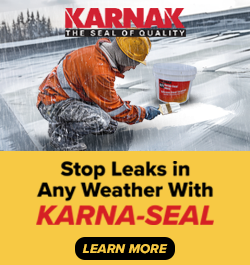
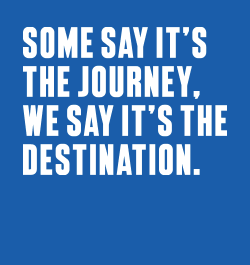
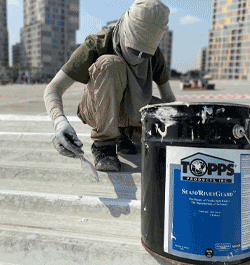






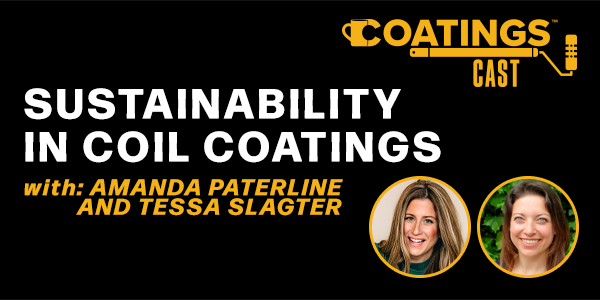
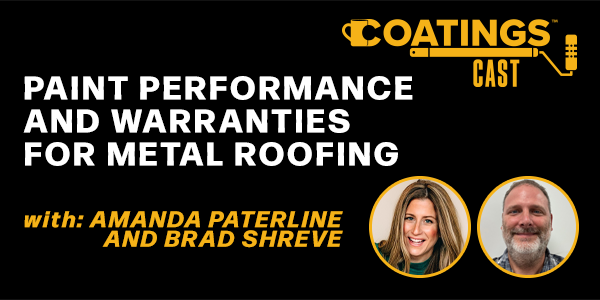
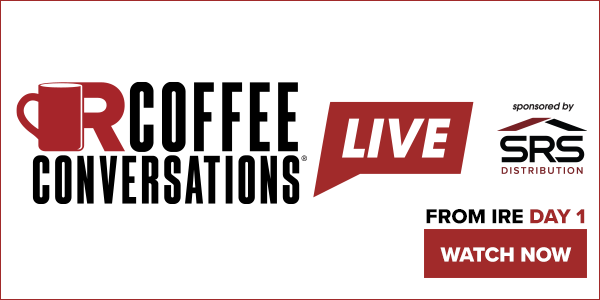
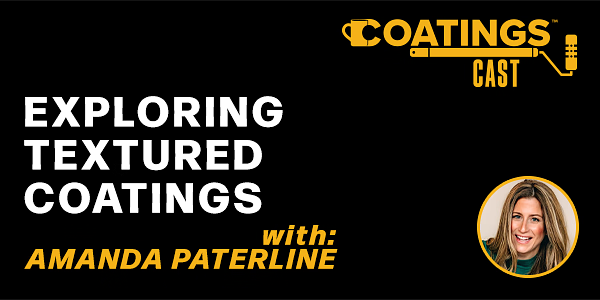





Comments
Leave a Reply
Have an account? Login to leave a comment!
Sign In